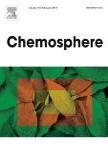版权所有:内蒙古大学图书馆 技术提供:维普资讯• 智图
内蒙古自治区呼和浩特市赛罕区大学西街235号 邮编: 010021

作者机构:State Key Laboratory of Geohazard Prevention and Geoenvironment Protection College of Ecology and Environment Chengdu University of Technology Chengdu610059 China Agricultural and Livestock Products Engineering Technology Research Center of XIZANG Autonomous Region Institute of Agricultural Quality Standard and Testing XIZANG Academy of Agricultural and Animal Husbandry Sciences XIZANG Lhasa850032 China Tibet University Lhasa850000 China
出 版 物:《Chemosphere》 (Chemosphere)
年 卷 期:2025年第372卷
页 面:144112页
核心收录:
学科分类:0710[理学-生物学] 0830[工学-环境科学与工程(可授工学、理学、农学学位)] 08[工学] 0837[工学-安全科学与工程]
基 金:This study was financially supported by Science and Technology Major Project of Xizang Autonomous Region of China (XZ202201ZD0004G06) and Science and Technology Plan Projects of Xizang Autonomous Region of China (XZ202401YD0001).This study was financially supported by Science and Technology Major Project of Tibetan Autonomous Region of China (XZ202201ZD0004G06) and Science and Technology Plan Projects of Tibetan Autonomous Region of China (XZ202401YD0001)
摘 要:Hardy plants play a crucial role in restoring high-altitude tailings ponds, but the accumulation of potentially toxic elements (PTEs) and detoxification mechanisms in alpine plants are understudied. This study first investigated the cadmium (Cd) accumulation capacity and detoxification mechanisms by comparative transcriptomics with different Cd stress (0, 5, 10, 20 and 40 mg L−1 Cd2+) of Koenigia tortuosa from a lead-zinc mine (4950 m above sea level) in Qinghai-Tibet Plateau. The findings revealed that, despite elevated Cd concentrations suppressed the growth of Koenigia tortuosa, the plant retained a notable ability to accumulate Cd. The content of soluble protein and antioxidant enzyme activities increased with the concentration of Cd from 5 mg L−1 to 20 mg L−1, and then decreased when the concentration of Cd increased to 40 mg L−1. The maximum Cd accumulation in roots was 269.44 mg kg−1 at the 20 mg L−1 Cd concentration, with 61.83% of Cd extracted by NaCl. In addition, transcriptome analysis showed that differentially expressed genes (DEGs) were mainly distributed in the nucleotide metabolism, oxidative phosphorylation pathway, glutathione metabolism and plant signaling, which were significantly up-regulated in ribosomal protein genes, translational factor genes and glutathione-related genes. These results will contribute to revealing the physiological response and molecular mechanism of Cd tolerance in Koenigia tortuosa, supporting the ecological remediation of Cd contaminated sites in high-altitude mining areas. © 2025 Elsevier Ltd